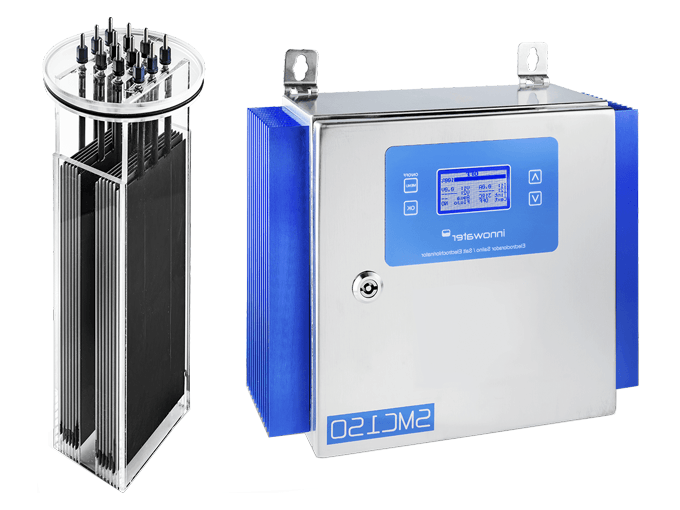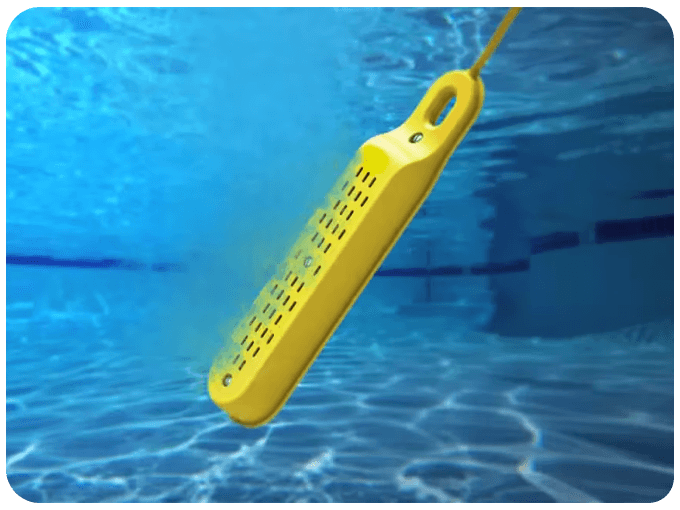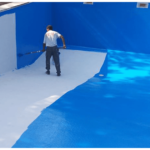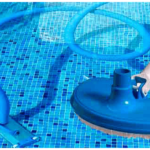Salt chlorinators for fiberglass pools have gained popularity due to their efficiency and environmental benefits. The introduction of this new disinfection technology has transformed how we enjoy our time in the water. In this article, we’ll explore in depth how these revolutionary devices can enhance your pool experience.
Table of Contents
What are Salt Chlorinators?
Salt chlorinators are disinfection devices that use the electrolysis process to convert salt into chlorine. Unlike traditional methods, this process naturally generates chlorine, providing a gentler and more efficient way to keep pool water clean.
Importance of Disinfection in Fiberglass Pools
Fiberglass pools require special care, and proper disinfection is key to keeping them in optimal condition. We’ll explore why salt chlorinators are the perfect choice for these pools, offering unique benefits that make a difference.
Advantages of Salt Chlorinators
Less Irritation for Skin and Eyes
Irritation caused by traditional chlorine is a thing of the past with salt chlorinators. Discover how these devices provide a more comfortable and healthy swimming experience, especially for those with sensitive skin.
Simplified Maintenance
Pool maintenance can be overwhelming, but salt chlorinators simplify the process. We’ll explore how these devices reduce the need for additional chemicals and make it easier to keep your pool in perfect condition.
Positive Environmental Impact
With growing environmental awareness, pool owners are seeking sustainable solutions. Find out how salt chlorinators offer a more eco-friendly approach to pool disinfection, minimizing environmental impact and contributing to a healthier environment.
How do Salt Chlorinators Work?
Salt chlorinators for fiberglass pools are devices that use electrolysis to produce chlorine from common salt, eliminating the need to manually add chlorine to the pool.
- Chlorine Generation by Electrolysis:
- The salt chlorinator consists of an electrolysis cell installed in the pool circulation system. Salty water, containing dissolved salt at specific levels, is introduced into this cell.
- Salt Decomposition:
- As salty water passes through the electrolysis cell, it undergoes a decomposition process through the application of electric current. This process splits salt molecules (NaCl) into chlorine ions (Cl-) and sodium ions (Na+).
- Sodium Hypochlorite Generation:
- The chlorine ions generated during electrolysis combine with sodium, forming sodium hypochlorite, which is a milder form of chlorine. Sodium hypochlorite is the active disinfectant that helps keep pool water free from germs, bacteria, and algae.
- Chlorine Distribution in the Pool:
- The generated chlorine is released into the pool water as it circulates through the system. This chlorine acts as a disinfectant, breaking down organic matter and keeping the water clean and safe for swimming.
- Automatic Chlorine Level Control:
- Many salt chlorinators are equipped with automatic control systems that continuously monitor and adjust chlorine levels in the pool. This ensures that an adequate chlorine concentration is maintained for disinfection, preventing both shortage and excess.
- Salt Replenishment:
- Over time, some of the dissolved salt in the water is consumed in the electrolysis process. It’s necessary to add additional salt to the pool to maintain the appropriate concentration and ensure the continuity of the chlorine generation process.

Installation and Maintenance
The installation of a salt chlorinator in a fiberglass pool typically follows these steps:
- Determining the Right Size:
- Selecting a salt chlorinator of the appropriate size for the pool’s capacity.
- Electrolysis Cell Placement:
- Installing the electrolysis cell in the pool circulation system. The location is usually after the filter and before the water return to the pool.
- Adding Salt to the Water:
- Measuring and adding the recommended amount of salt to the pool water. This salt will dissolve and be used in the electrolysis process to generate chlorine.
- Connecting the Chlorinator:
- Connecting the salt chlorinator to the electrical power source and the pool circulation system.
- Setting Up and Initial Testing:
- Setting up the chlorinator according to the manufacturer’s specifications and conducting initial tests to ensure the electrolysis process is functioning correctly.
- Adjusting Levels:
- Adjusting chlorine output levels according to the pool’s disinfection needs.
- Verifying Automatic Operation:
- Confirming that the system is operating automatically to maintain chlorine levels.
Tips for Regular Maintenance:
- Regular Monitoring of Salt Levels:
- Regularly checking salt levels in the pool and adjusting as necessary to maintain the appropriate concentration.
- Electrolysis Cell Cleaning:
- Performing periodic cleanings of the electrolysis cell to remove mineral build-up that can affect its performance.
- Salt Replenishment:
- Adding additional salt to the pool if needed to compensate for natural loss due to rain, backwashing, and other factors.
- Inspection of Cell and Cables:
- Regularly inspecting the electrolysis cell and cables for signs of wear or corrosion.
- System Calibration:
- Calibrating the system according to the manufacturer’s recommendations to ensure accuracy in chlorine generation.
- pH Maintenance:
- Ensuring proper pH levels in the pool, as this can influence the effectiveness of the salt chlorinator.
Following these installation steps and maintenance tips, you can enjoy an efficient and low-maintenance salt chlorination system in any fiberglass pool.
Common Myths About Salt Chlorinators
Are they harmful to fiberglass?
In general, salt chlorinators are not harmful to fiberglass pools. The electrolysis process used by salt chlorinators to generate chlorine from dissolved salt does not involve the use of harsh chemicals that can damage fiberglass. However, it’s important to maintain proper salt levels and perform regular maintenance. It’s recommended to follow manufacturer guidelines and regularly test the water to ensure a proper balance.
Does the water taste different with salt chlorinators?
Some wonder if water treated with salt chlorinators has a peculiar taste. You’ll be surprised to discover that the water is fresh and natural, without the characteristic taste of traditional chlorine.
Comparison with Traditional Chlorination Methods
Liquid Chlorine vs. Salt Chlorinators
We compare the pros and cons of liquid chlorine with salt chlorinators. Discover why most fiberglass pool owners are making the switch to this innovative technology.
Liquid Chlorine:
- Advantages:
-
- Easy to acquire and use.
- Ideal for shock treatments.
- Does not require a significant initial investment.
- Disadvantages:
- Requires frequent manual application.
- Can irritate skin and eyes in high concentrations.
- Does not offer automatic control of chlorine levels.
Salt Chlorinators:
- Advantages:
- Provide continuous and automatic chlorination.
- Less irritating for skin and eyes.
- Require less manual intervention.
- Disadvantages:
- Require a higher initial investment.
- Need periodic maintenance of the electrolysis cell.
- Mineral build-up can affect performance.
Chlorine Tablets vs. Salt Systems
Chlorine Tablets:
- Advantages:
- Convenient and easy to use.
- Do not require a significant initial investment.
- Ideal for smaller pools.
- Disadvantages:
- Manual application is frequently needed.
- Can cause pH imbalances in water.
- Handling tablets can be cumbersome.
Salt Systems:
- Advantages:
- Offer continuous and automatic chlorination.
- Reduce the need to handle chemical products.
- Provide a softer and less irritating form of chlorine.
- Disadvantages:
- Require a higher initial investment.
- Mineral build-up may require regular cleaning.
- May not be ideal for smaller pools.

Considerations When Purchasing a Salt Chlorinator
Not all salt chlorinators are the same. We’ll provide essential information on how to choose the right size and capacity for your pool, ensuring optimal performance.
- Size and Capacity
- Type of Electrolysis Cell
- Salt Levels
- Ease of Installation and Maintenance
- Compatibility with Filtration System
- Energy Efficiency
- Brands and Reviews
- Warranty and Customer Service
Some recognized brands in the salt chlorinator market for pools include Hayward, Pentair, Zodiac, and CircuPool, among others. However, it’s important to research and compare specific models within these brands to find the chlorinator that best suits the needs of your fiberglass pool.
Frequently Asked Questions
Can I use salt chlorinators in any fiberglass pool?
Yes, in general, salt chlorinators can be used in fiberglass pools without issues. Fiberglass is a resilient material and compatible with salt chlorination systems as long as specific recommendations and precautions are followed.
How long does the installation process take?
The duration of installing a salt chlorinator for a fiberglass pool can vary depending on several factors, including the specific brand and model of the chlorinator, system complexity, and the experience of the professional performing the installation. Generally, the installation process usually takes several hours and can follow these general steps:
- Preparation:
- Assessing the suitable location to install the chlorinator and ensuring it meets manufacturer specifications.
- Checking the chlorinator’s compatibility with the fiberglass pool.
- Electrical Connections:
- Making necessary electrical connections to power the salt chlorinator. This may include installing an electrical panel or connecting to an existing power source.
- Electrolysis Cell Installation:
- Mounting the electrolysis cell in line with the pool filtration system pipes. Ensuring it’s correctly connected and sealed.
- Adjustments and Configurations:
- Setting up the chlorinator’s settings according to the pool’s specific needs and owner preferences. This may include timer calibration and chlorine production settings.
- Testing and Verifications:
- Conducting operational tests to ensure the chlorinator is generating chlorine properly.
- Checking for leaks in connections and ensuring all functions are operational.
- Owner Instructions:
- Providing instructions to the owner on how to monitor and maintain the chlorinator, as well as how to adjust settings as needed.
- Final Testing:
- Performing final water tests to ensure chlorine levels and other parameters are within recommended ranges.
It’s important to note that installation should be performed by an experienced professional to ensure safe and efficient operation of the salt chlorinator. The exact duration of the process may vary, and it’s recommended to follow specific recommendations from the chlorinator manufacturer and the pool manufacturer.
Can they be used with well water?
Yes, in general, well water can be used without issues as long as proper analysis and adjustments are made. It’s possible to use a salt chlorinator in a fiberglass pool with well water; however, regular monitoring and maintenance are key to ensuring efficient and long-lasting system performance.
Are salt chlorinators safe for children?
Yes, in general, salt chlorinators are safe for children when used correctly and maintained according to manufacturer recommendations. Safety also depends on maintaining safe chlorine and pH levels and constant supervision of children in the pool.
How durable are salt chlorinators?
Salt chlorinators are known for their durability. With proper maintenance, many models can last for several years, providing reliable disinfection.
Is it difficult to adjust salinity levels?
Adjusting salinity levels is surprisingly easy with proper instructions. Most devices have intuitive controls that simplify the process.
Do salt chlorinators work in cold climates?
Yes, salt chlorinators are effective in cold climates. However, it’s important to adjust settings according to temperatures to ensure optimal performance.
Can I use any type of salt in a salt chlorinator?
It’s recommended to use specific pool salt to ensure chlorinator efficiency. Avoid salts that contain additives that could affect performance.
Do I need a professional for salt chlorinator installation?
Although some homeowners opt for professional installation, many devices come with detailed instructions for homeowners to install themselves.
Conclusion
Salt chlorinators represent a revolution in fiberglass pool disinfection. With benefits ranging from skin softness to environmental sustainability, these devices have become the preference of many pool owners. Make the switch today and experience a new way to enjoy water.


